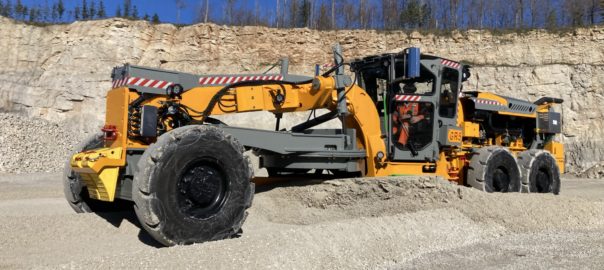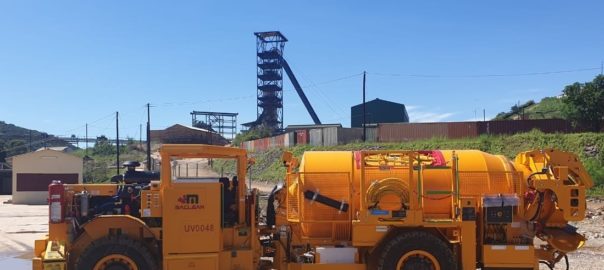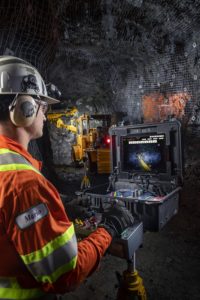With the first-ever MacLean GR5 underground road grader already shipped to Africa and additional units scheduled for factory production, the newest addition to the MacLean line of Mine-Mate™ utility vehicles, which offers up a ruggedised, high performance mobile solution for maintaining haulage ramps in optimal condition, is ready to be introduced to the mining world.
The GR5 mining vehicle is an evolution for MacLean, starting back in 2018 when the company collaborated with the specialty engineering firm, MEDATech, to retrofit a battery-electric grader for Borden Gold in northern Ontario (then owned and operated by Goldcorp). Based on the engineering and manufacturing learnings from this one-off custom project, MacLean embarked on a collaborative process to better understand the grader vehicle category, so that it could be successfully adapted from road to underground mining applications.
Working closely with road grader industry professionals from a former Canadian grader OEM with industry expertise, MacLean went back to the drawing board to develop a fit-for-purpose design for the underground environment.
“While most products in this category tend to be considered too lightweight for the work, the GR5 is purposely sized to match the tractive effort and drawbar pull of full-sized surface graders,” MacLean said. “The unit features a CAN bus control system that allows joystick control technology to be deployed for both steering and application functions simultaneously to ease operator comfort and control, while also boasting an onboard vehicle telemetry package that can monitor the performance and health of the vehicle.”
On the powertrain side, the unit can be either battery-electric or diesel-powered and comes equipped standard with a six-wheel infinitely adjustable drive system using dual hydrostatic motors and active traction control, the company said.
Size, manoeuvrability, visibility, simplicity, and ruggedness were key design factors. As a result, the unit is similar in height to the rest of the MacLean Utility Vehicle product line, designed to work optimally in 5 m x 5 m headings. The unit’s design also includes a combination of frame articulation and front wheel-steering, which minimises its turning radius underground and its moldboard system uses a simpler design than its surface grader counterparts to ensure durability and reliability.
Dan Stern, Senior Product Manager, said: “When we designed the GR5 Grader we started from the ground-up, where we literally began with a clean slate and developed the rig using the latest in proven technologies and components. The GR5’s cab environment, for example, was developed using an Oculus Rift VR headset to map out placement of controls, verify visibility and sightlines, and ultimately get a good sense of what this rig would feel like to operate before any steel was cut.”
David Jacques, Vice President of Engineering at MacLean, added: “The product development approach on this unit is a great example of what we like to call MacLean ‘Application Intelligence’, where we take our mobile equipment engineering expertise and combine it with our knowledge of the mining environment to design units that are fit for the job they need to do underground. We truly believe we’ve ‘made the grade’ and developed a winning product that leverages our core knowledge of the underground environment and combines it with application knowledge from grader design experts to address the actual needs of the mining industry – it all comes back to our Application Intelligence.”
Maarten van Koppen, Vice President of Product Management at MacLean, said: “The state of ramps is always an important factor in a mine’s haulage performance, and it becomes even more important in the context of full-fleet electrification that mining companies around the globe are actively pursuing. I know this first-hand from my time as a Mining Engineer at Borden Gold, where I was part of the team responsible for designing and developing that project. To maximise the benefits of down-ramp energy regeneration, mines need well-maintained roadbeds, and we’ve got the solution.”










